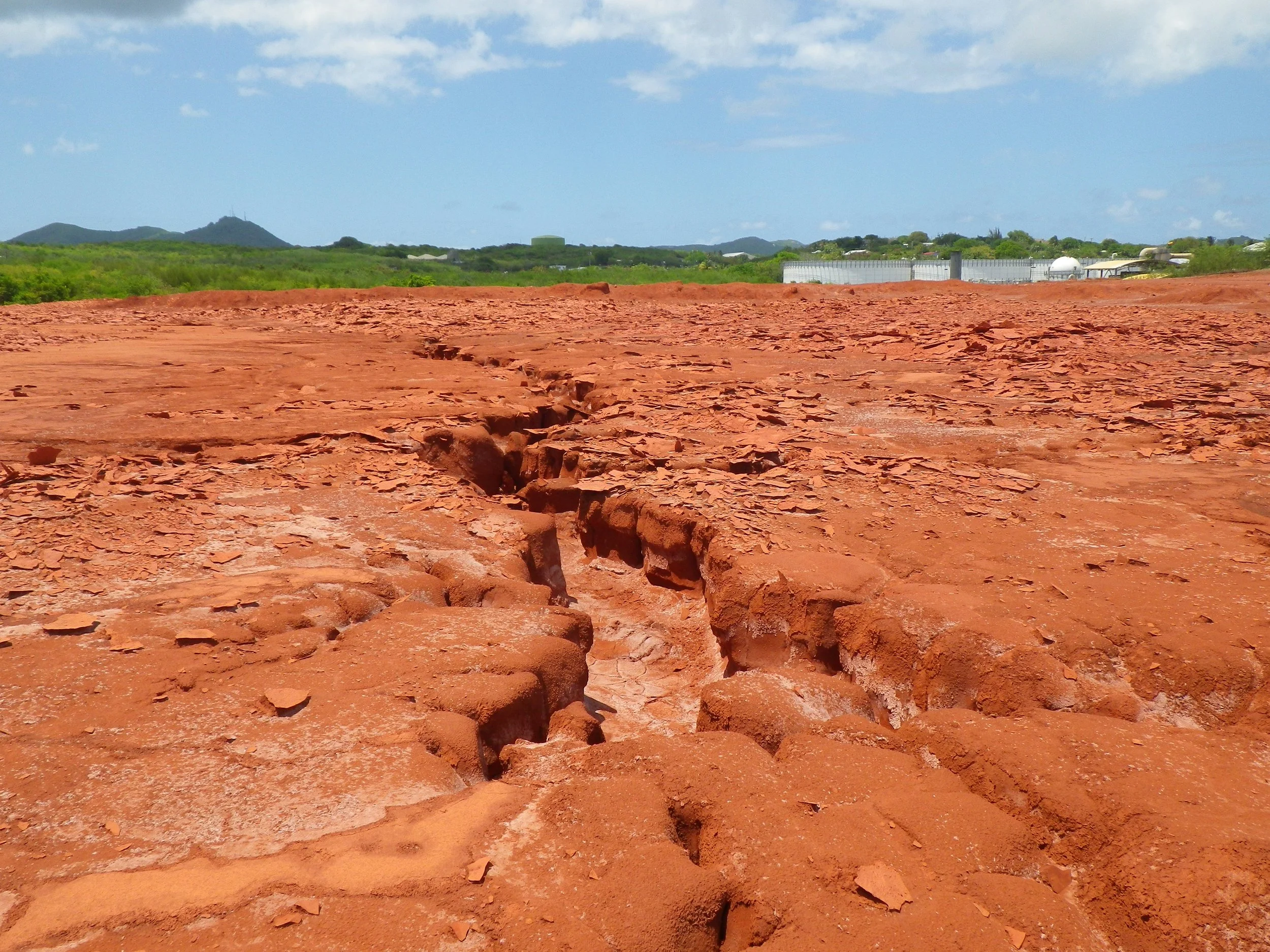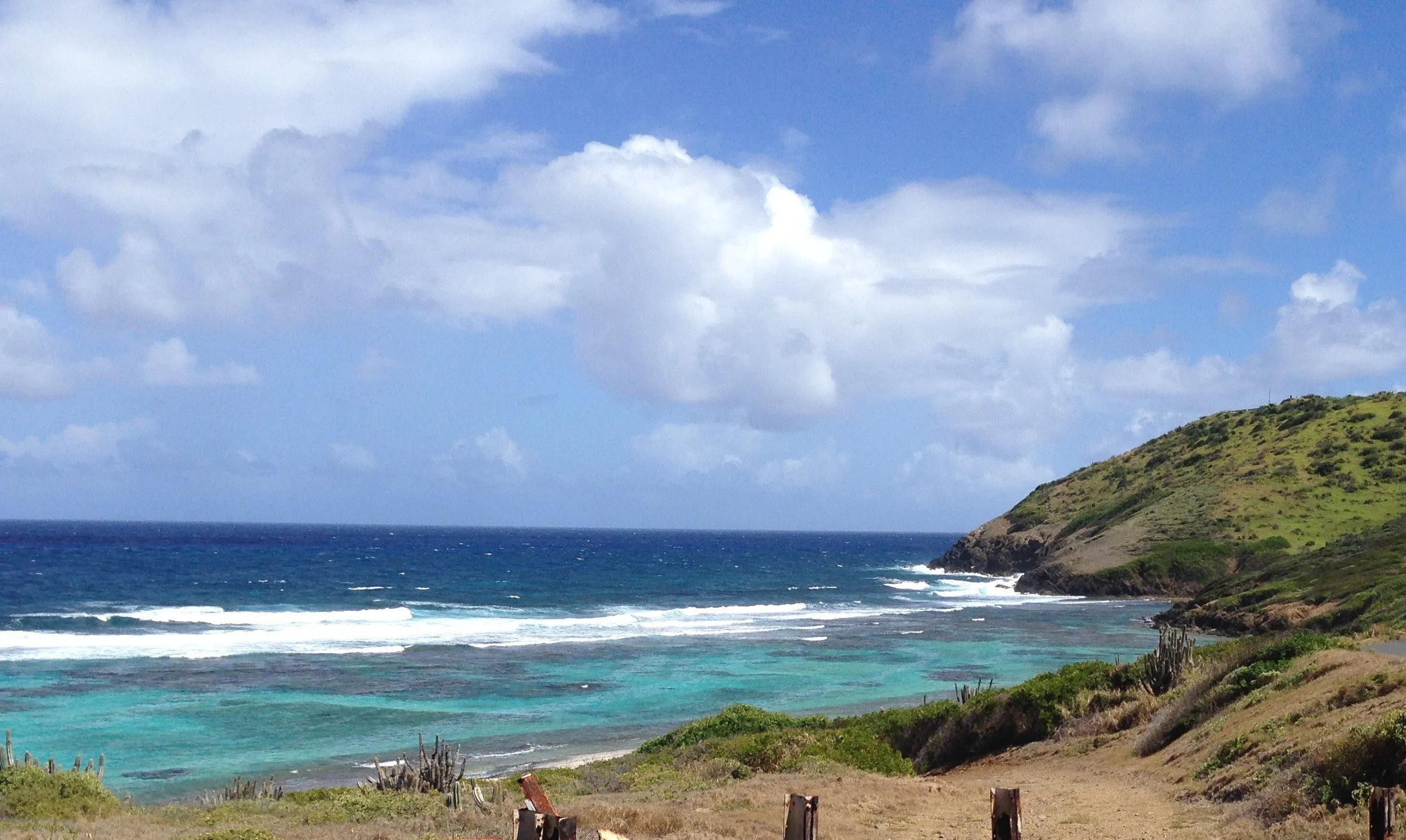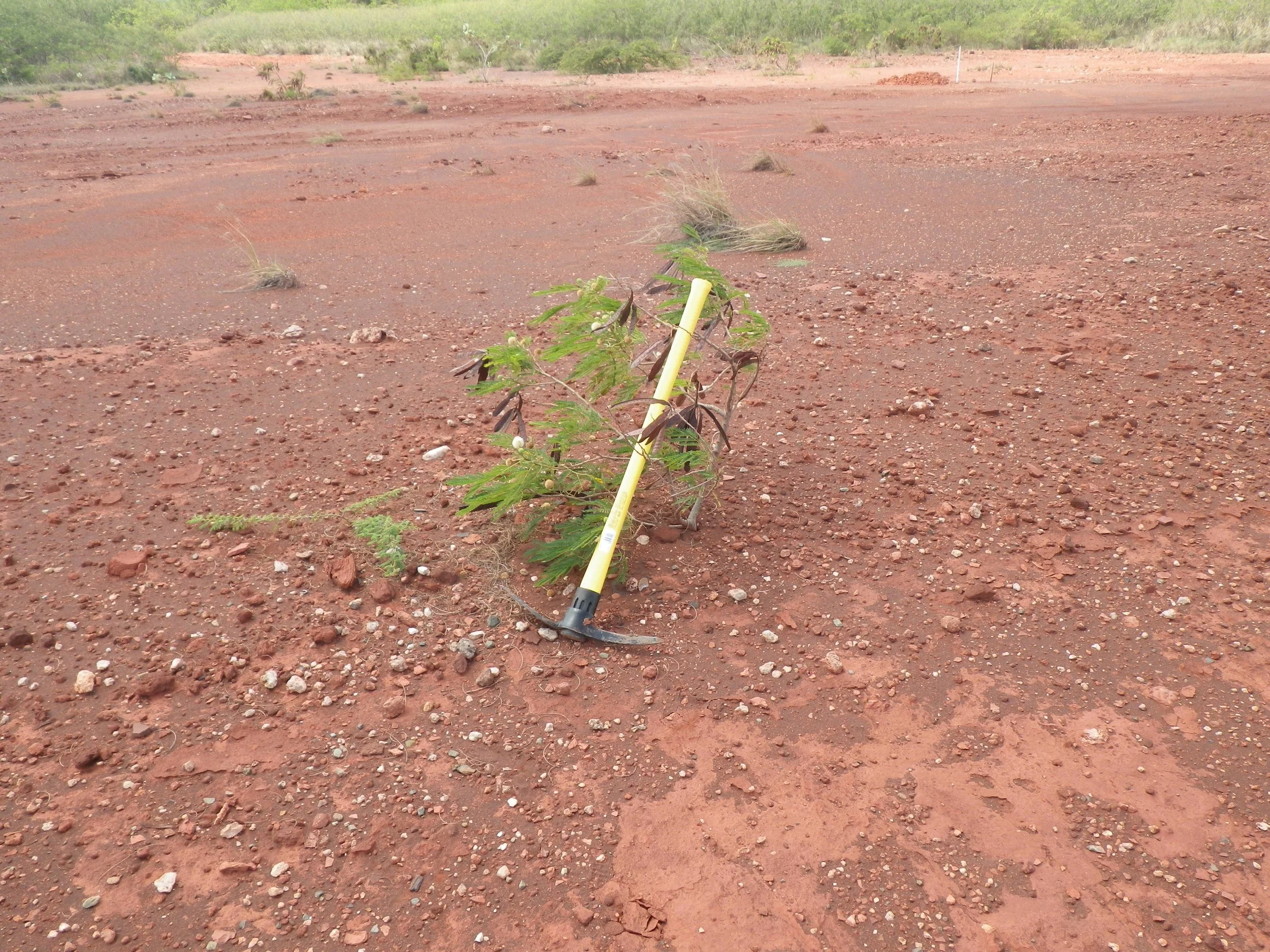U.S. Virgin Island
Bauxite Residue (Red Mud)
Revegetation
〰️
Cost savings
〰️
Revegetation 〰️ Cost savings 〰️
Achievements:
Identified the optimal strategies for promoting vegetation establishment under the challenging conditions presented by the red mud
With client’s implementation of recommendations:
Established sustainable vegetative cover on formerly barren red mud deposits within a few years
Reduced wind and water erosion risks, especially during tropical storms and hurricanes
Minimized the threat of red mud runoff into nearby marine environments
Enhanced the site’s ecological and visual quality through successful revegetation
Demonstrated the effectiveness of nature-based solutions for large-scale industrial waste stabilization
Project Description: Revegetation of Aluminum Production Processing Site in the Caribbean
Revegetation pilot study test blocks (Field Trials) were constructed at two locations on a U.S. Virgin Island. Applied Natural Sciences, Inc. (ANS) designed and executed portions of the construction and provided oversight during the implementation of the pilot studies, which were conducted in September and October 2013.
The primary objectives of the Field-Scale Pilot Study were to:
Evaluate the effectiveness of selected treatment materials—used individually or in combination—in mitigating conditions in the bauxite residue that hindered the establishment and growth of vegetation; and
Assess various final cover scenarios in conjunction with the different bauxite residue treatments.
The final design of the field trials supported the evaluation of both objectives, as well as the combined effects of treatment and cover strategies. Treatment application rates were tailored to address key physical and chemical challenges, including elevated pH and sodium levels, poor soil structure and fertility, limited microbial activity, and low water-holding capacity. Treatment effects on vegetation establishment and growth were evaluated both independently and in combination. In addition, the treatments were assessed for their impact on the underlying soil conditions.
Background
Beginning in 2013, Applied Natural Sciences, Inc. undertook project to demonstrate how ecological innovation could be applied to transform a red mud disposal area into a stable, vegetated landscape. The client, an alumina refinery operator, had historically extracted liquid alumina from bauxite ore and shipped it to the United States for further processing. The resulting waste—commonly referred to as red mud—accumulated across approximately 100 acres, with depths reaching up to 100 feet, creating a significant and persistent environmental concern.
The region’s tropical climate and frequent hurricanes posed an additional risk: erosion and runoff from the exposed red mud could potentially contaminate surrounding marine ecosystems. Traditional capping solutions using compacted clay were considered prohibitively expensive. As a more cost-effective alternative, the client explored the potential for establishing vegetative cover directly in amended red mud.
Revegetation of red mud, however, presents several challenges. The material is highly alkaline and saline, creating a chemically hostile environment for most plant species. It also lacks sufficient structure, has extremely low hydraulic conductivity, minimal microbial activity, and poor water-holding capacity. Compounding these challenges was the limited availability of suitable amendment materials on the island, which necessitated a highly strategic and resource-conscious approach to remediation.
From Red Mud to Viable Soil
To develop a remedial design, the initial site characterization included identification of volunteer grasses and volunteer tree establishment around the periphery of the pile. Bermuda, Hurricane, and Guinea grasses were each identified, almost exclusively in areas where the red mud had been eroded and redeposited. Soil pH in these areas of volunteer grass growth was typically in the 9 to 10 range. It became clear that some kind of soil amendment would be required to make the raw waste (pH >11) a viable planting medium for the observed grasses (pH 9-10). Potential soil amendments were limited to materials available on the island.
The work began with a field trial designed to assess the effects of four bauxite residue treatments (each with three fertilization rates) and four capping options (including a no-cap control) on the establishment and growth of three grass treatments: Guinea Grass, Hurricane Grass, and a mixture of Bermuda, Klein, and Johnson Grass.
In addition to the primary treatment combinations, a sub-study assessed the impact of a sulfur treatment on one of the grass treatments (sulfur was readily available on the island as a byproduct of oil refining). This comprehensive approach allowed us to evaluate interactions between treatments and identify the optimal strategies for promoting vegetation establishment under the challenging conditions presented by the red mud. Available soil amendments included:
· Crushed caliche (soft limestone)
· Organic matter (chipped trees from hurricane storm damage)
· Topsoil (a limited amount from local borrow sources)
· Elemental Sulfur
The local topsoil contained viable seeds from Tan-Tan trees (Leucaena leucocephala). These trees were not native but had become naturalized to the island and were quite common in the area surrounding the pile and the rest of the island. Introduced in the 1950s to control erosion, improve soil fertility (it is a nitrogen fixer), provide a food source for livestock, and to improve soil structure, Tan-Tan trees are considered invasive. Other native tree species were considered for a vegetative cover, but the fact that the Tan-Tan would colonize rapidly and outcompete whatever other trees were introduced resulted in the decision to allow them to propagate naturally from the applied local topsoil.
Through the trial, we developed a planting strategy that incorporated fast-growing grasses and woody plants to establish initial ground cover. These grasses provided several benefits: they stabilized the surface, reduced erosion during storms, and began the slow process of building soil organic matter. Over time, this foundational vegetation created conditions conducive to other plant species (lower pH, higher organic matter, improved soil structure), further enhancing biodiversity and ecological stability.
Results: The Economic and Environmental Impact
When the client implemented a design based on the Field Study, the results demonstrated significant and measurable improvements. Within a few years, the formerly barren red mud deposit supported a sustained vegetative cover, with a developing canopy of grasses and other plant species. This vegetation effectively reduced the potential for wind and water erosion, particularly during tropical storms and hurricanes, thereby mitigating the risk of red mud entering adjacent marine environments. In addition to stabilizing the site, the revegetation effort enhanced both the visual and ecological characteristics of the area.
The client’s investment in a revegetation-based approach, as opposed to conventional clay capping, resulted in substantial cost savings while achieving long-term environmental stabilization. This project illustrates the potential for nature-based solutions to address highly constrained and degraded environments. By applying ecological design principles and making strategic use of locally available materials, a complex waste management challenge was transformed into a more resilient and sustainable landscape. The outcomes from this Caribbean site underscore the broader applicability of ecologically informed remediation strategies in industrial contexts.




